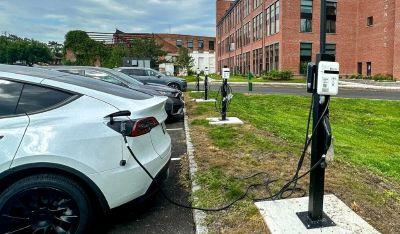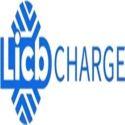Notifications

7 minutes, 5 seconds
-8 Views 0 Comments 0 Likes 0 Reviews

LiCB Charge is a leading China EV charger manufacturer, offering reliable AC and DC electric vehicle charging stations along with comprehensive charging solutions.
As the world accelerates toward sustainable transportation, electric vehicles (EVs) are leading the charge. While EVs bring benefits like lower emissions, reduced fuel costs, and quieter rides, the infrastructure to support them remains uneven—particularly for renters. Unlike homeowners, who often can install EV chargers on their property, renters face unique challenges. With nearly 44 million U.S. households living in rental units, ensuring equitable access to EV charging is essential for the transition to succeed.
Apartment EV charging is no longer a luxury for the future—it’s an urgent necessity. With EVs already comprising 8.6% of vehicle sales and projections estimating 13–29% market share by 2050, multifamily communities must begin installing this critical amenity today.
Level 1 charging uses a standard 120-volt household outlet—universally available but slow, delivering about 1 kWh per hour or roughly 3–5 miles of range. Full charges can take over 50 hours, making it impractical for daily use, especially for those with longer commutes.
Level 2 chargers operate on a 240-volt circuit and are the most popular residential option. They deliver up to 19 kWh, adding 15–40 miles of range per hour and fully charging most EVs within 4–10 hours. For multifamily properties, Level 2 chargers offer the best balance of cost, convenience, and performance.
Level 3 chargers (DC Fast Chargers) operate between 400 and 1,000 volts and can charge an EV battery to 80% in under an hour. While ideal for highways and public hubs, their high voltage, infrastructure demands, and installation costs typically make them impractical for most apartment complexes—though they may suit large, high-traffic urban developments requiring quick top-ups.
Range anxiety—the fear of running out of charge without access to nearby stations—remains a significant barrier to EV adoption. Reliable apartment charging reassures renters that they can depend on their EVs for daily use.
Charging at home means no more detours to public chargers or waiting in lines. Renters can plug in overnight and wake up to a full battery, seamlessly integrating EV use into their routines.
Unlike homeowners, renters typically can’t install chargers without landlord approval. Offering EV charging as an amenity eliminates this obstacle, encouraging EV adoption and enhancing property appeal.
Public chargers often have variable fees. Apartment charging provides predictable, potentially lower-cost options. Property managers can include charging in lease agreements or offer discounts, boosting tenant satisfaction and loyalty.
Older buildings may lack sufficient electrical capacity for multiple chargers.
Solution: Begin with a professional electrical assessment. Smart load management systems can dynamically distribute power and reduce upgrade costs.
Determining which tenants get charging access can be tricky.
Solution: Start small with shared or reserved spots, expanding as demand grows. Use waitlists or reservation apps to ensure fair access. Monetizing usage can offset installation costs.
Weather, longer cable runs, and connectivity pose challenges in outdoor lots.
Solution: Choose weatherproof chargers designed for outdoor installation. Plan trenching and conduit routes carefully. Smart chargers with cellular or Wi-Fi connectivity ensure reliable communication.
Upfront installation costs may deter property owners.
Solution: Take advantage of government grants, tax credits, and utility rebates targeting multifamily properties. Revenue from tenant fees or third-party partnerships can further offset costs.
EV infrastructure appeals to environmentally conscious renters, helping properties stand out and reduce turnover.
Green amenities like EV charging increase property desirability and value, positioning buildings as future-ready.
Charging fees per kWh, hour, or monthly flat rates can generate passive income for property owners.
For EV adoption to be truly inclusive, renters must have fair access to charging infrastructure. Apartment communities—from urban high-rises to suburban complexes—need to invest in this essential amenity now.
With modern solutions, financial incentives, and thoughtful planning, EV charging installation is achievable for most properties. Early adopters gain a competitive edge, attract satisfied tenants, and contribute to a cleaner, more sustainable future.
EV charging at apartments is no longer optional—it’s a necessity. It alleviates range anxiety, simplifies daily life, removes barriers for renters, and enhances property appeal. With scalable technology and financial support, even older buildings can embrace the electric future.
As EV sales climb and cities push for cleaner transport, apartment EV charging will evolve from luxury to expectation. Property owners, managers, and planners must act now—not just to stay competitive but to be leaders in the clean mobility revolution.Know more about Google SEO Directory
China EV Chargers EV Charger Manufacturer Smart EV Chargers Electric Car Chargers Electric Vehicle Chargers Electric Car Charging Stations

